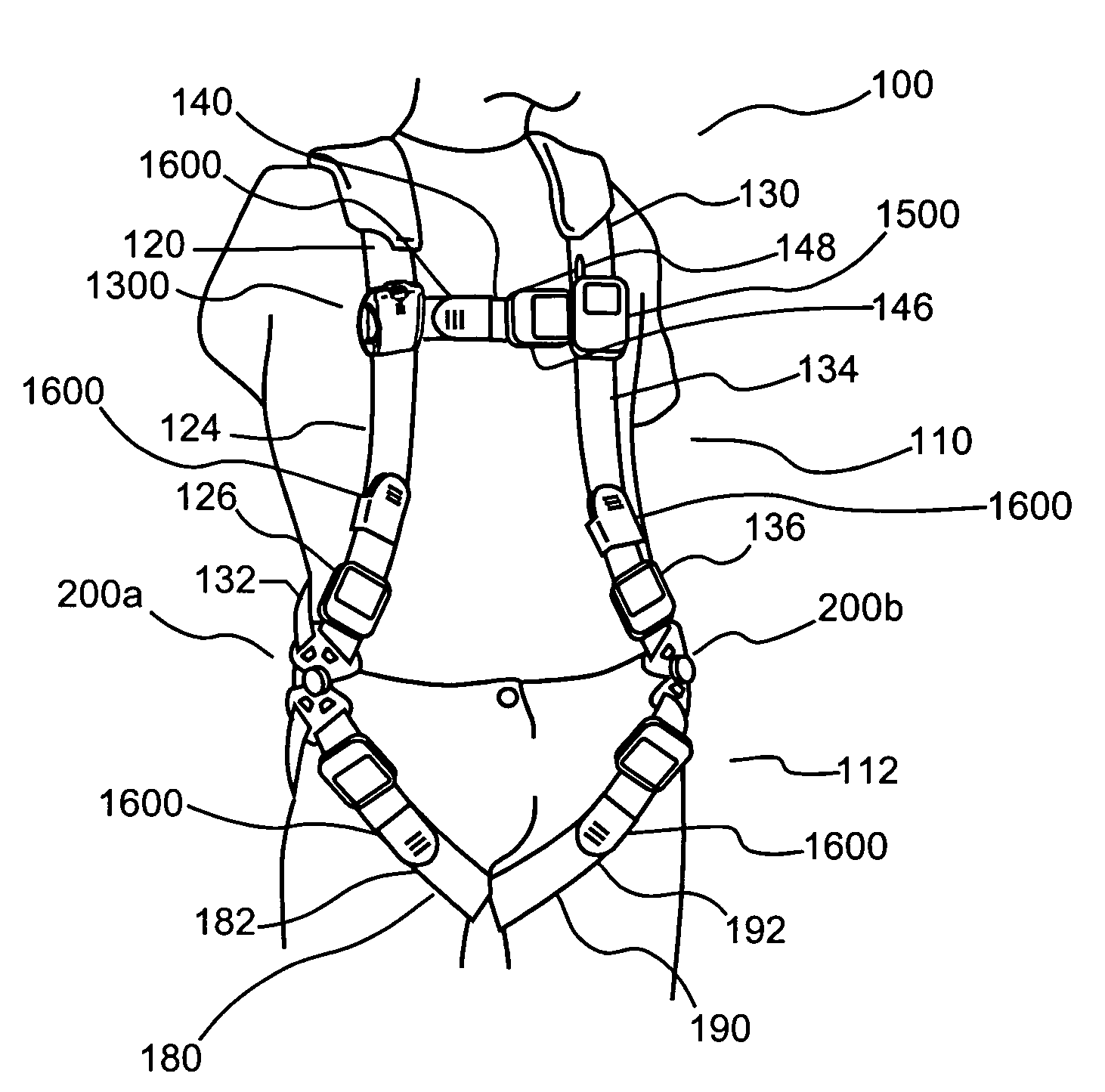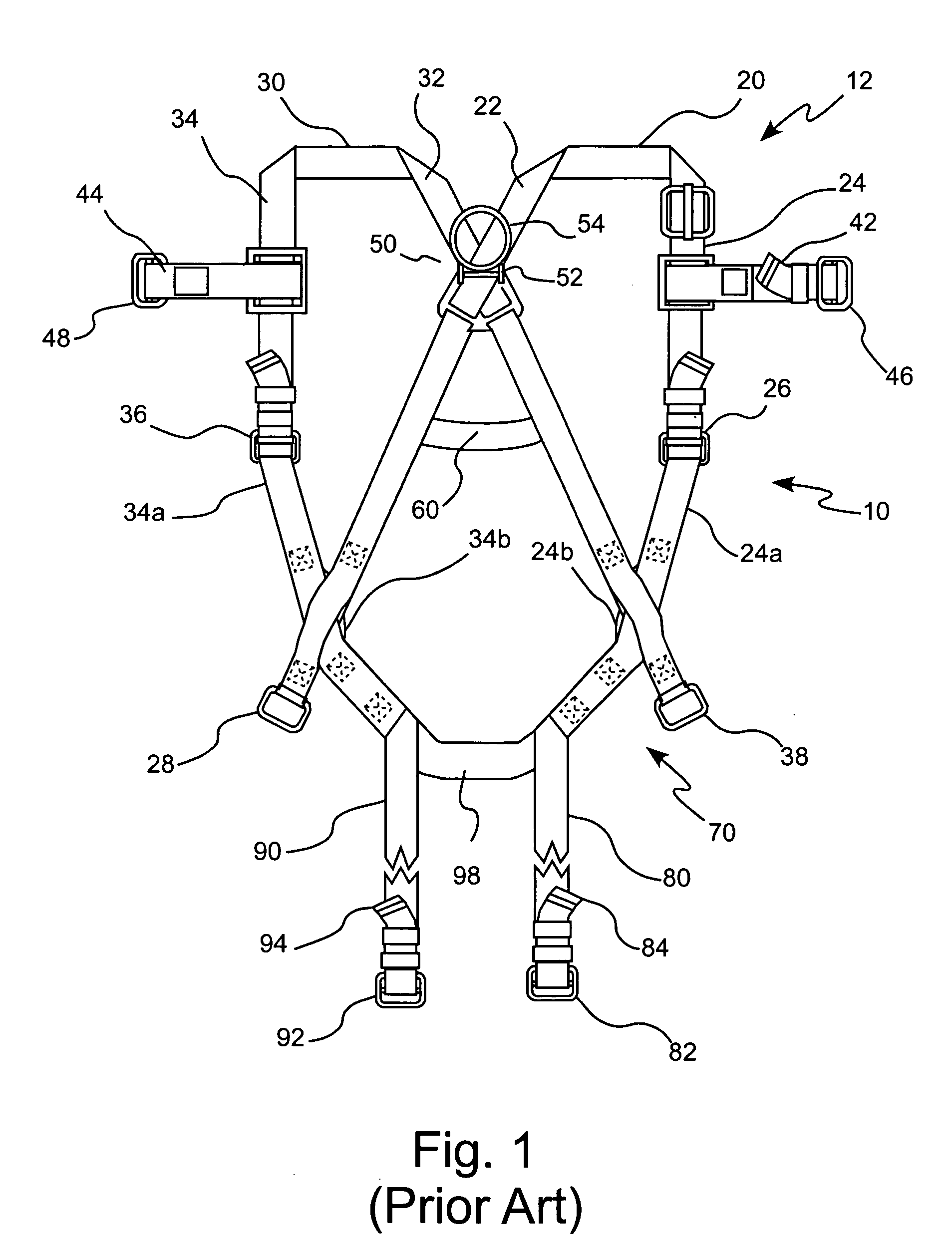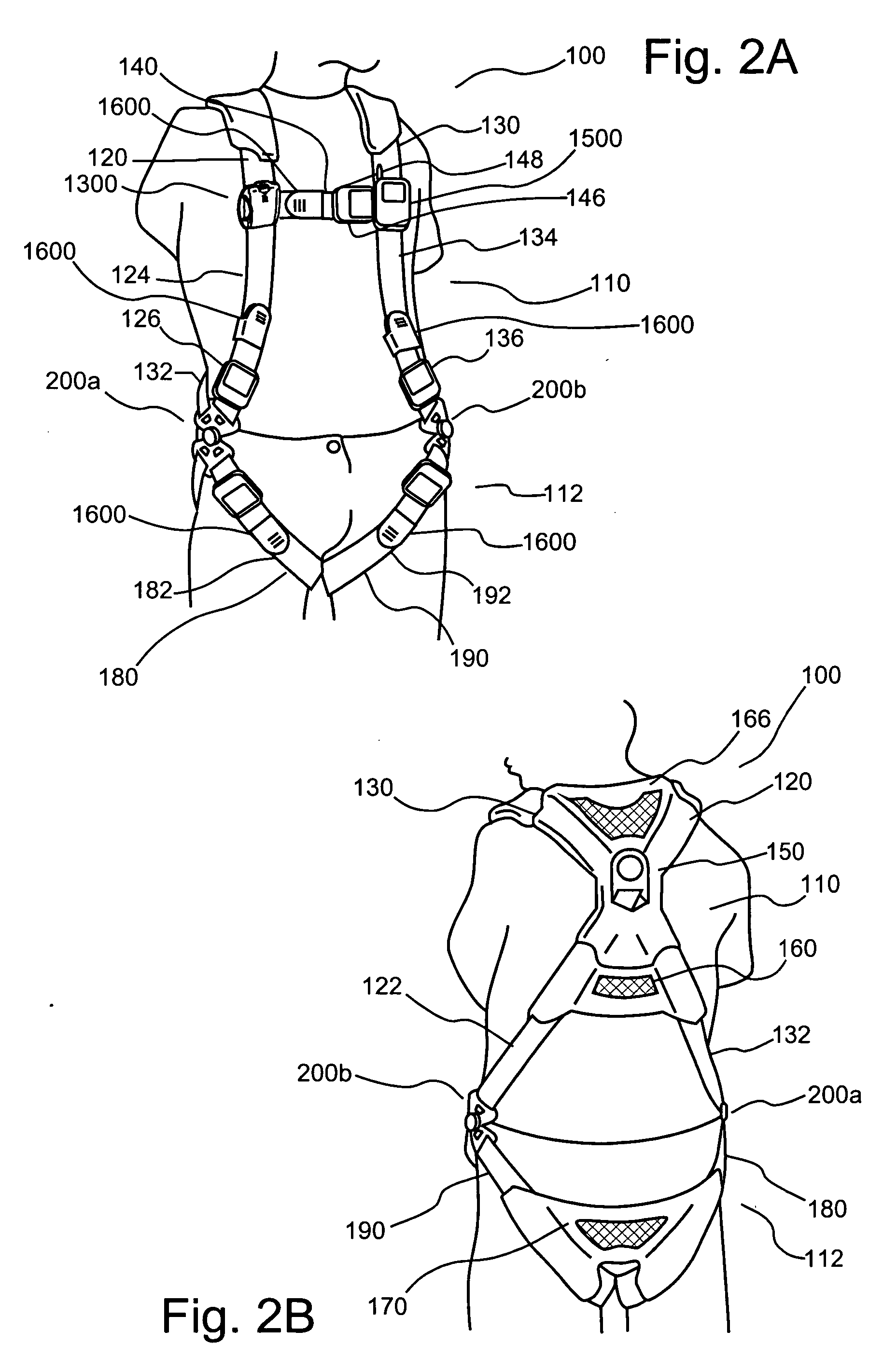Safety harnesses
a full-body safety and harness technology, applied in the field of full-body safety harnesses, can solve the problems of significant pulling (that is, tension in the strapping) on the lower torso or seat portion of the harness, and achieve the effect of less tension
- Summary
- Abstract
- Description
- Claims
- Application Information
AI Technical Summary
Benefits of technology
Problems solved by technology
Method used
Image
Examples
Embodiment Construction
[0077]FIGS. 2A through 2G illustrate one embodiment of a full body safety harness 100 of the present invention. Safety harness 100 includes an upper torso section, portion or module 110 and a lower torso (seat) section, portion or module 112. Upper torso portion 110 includes a first shoulder strap 120 and a second shoulder strap 130 extending over the shoulders of the user and a multi-component chest strap 140 extending between first shoulder strap 120 and second shoulder strap 130. First ends of each of shoulder straps 120 and 130 extend down over the back of the user to form first and second generally longitudinal back straps 122 and 132, respectively. Back straps 122 and 132 cross through and connect to a D-ring 150 in a manner similar to that described above in connection with D-ring 50. After crossing and passing through D-ring 150, back strap sections 122 and 132 of shoulder straps 120 and 130 are connected via a generally latitudinal back strap 160, which passes generally lat...
PUM
 Login to View More
Login to View More Abstract
Description
Claims
Application Information
 Login to View More
Login to View More - R&D
- Intellectual Property
- Life Sciences
- Materials
- Tech Scout
- Unparalleled Data Quality
- Higher Quality Content
- 60% Fewer Hallucinations
Browse by: Latest US Patents, China's latest patents, Technical Efficacy Thesaurus, Application Domain, Technology Topic, Popular Technical Reports.
© 2025 PatSnap. All rights reserved.Legal|Privacy policy|Modern Slavery Act Transparency Statement|Sitemap|About US| Contact US: help@patsnap.com



